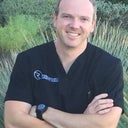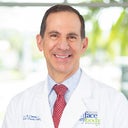Posted underFacelift q&a
Nasolabial folds - I want a more permanent solution, maybe stem cell lift? (Photo)
I'm in my late 30s. Deepening lines and folds are very bothersome. I don't have full cheeks to begin with, so it's even worse.My face is narrow and this exacerbates it.It's going to progress, so I'd like to do something that will last rather than getting temporary fillers.Is a face lift an option, stem cell or otherwise?The left side is worse and there's a line that trails down away from my lips toward my ear that REALLY draws the eye.It's hard to see in the pic but it's very apparent to me.
Answers (15)
From board-certified doctors and trusted medical professionals
Dr. Bryson G. Richards, MD

Dr. Bryson G. Richards, MD
Board Certified Plastic Surgeon
Answer
Dr. Vincent N. Zubowicz, MD

Dr. Vincent N. Zubowicz, MD
Board Certified Plastic Surgeon
Answer
Dr. Ross A. Clevens, MD, FACS

Dr. Ross A. Clevens, MD, FACS
Board Certified Facial Plastic Surgeon
Answer
Dr. Richard Baxter, MD

Dr. Richard Baxter, MD
Board Certified Plastic Surgeon
Answer
Dr. Harold J. Kaplan, MD

Dr. Harold J. Kaplan, MD
Board Certified Facial Plastic Surgeon
Answer
Dr. Gary L. Ross, MBChB, FRCS
Dr. Gary L. Ross, MBChB, FRCS
Specialist Registered Plastic Surgeon
Answer
Dr. Robert H. Hunsaker, MD
Dr. Robert H. Hunsaker, MD
Board Certified Plastic Surgeon
Answer
Dr. Stephen J. Ronan, MD, FACS
Dr. Stephen J. Ronan, MD, FACS
Board Certified Plastic Surgeon
Answer
More Facelift Questions
See all Facelift Q&AWE SEND PRETTY
EMAILS
What’s trending? Who’s turning heads? Which TikTok myths need busting? We’ve got you. No fluff, no gatekeeping—just real talk. Get our free, unfiltered newsletter.
